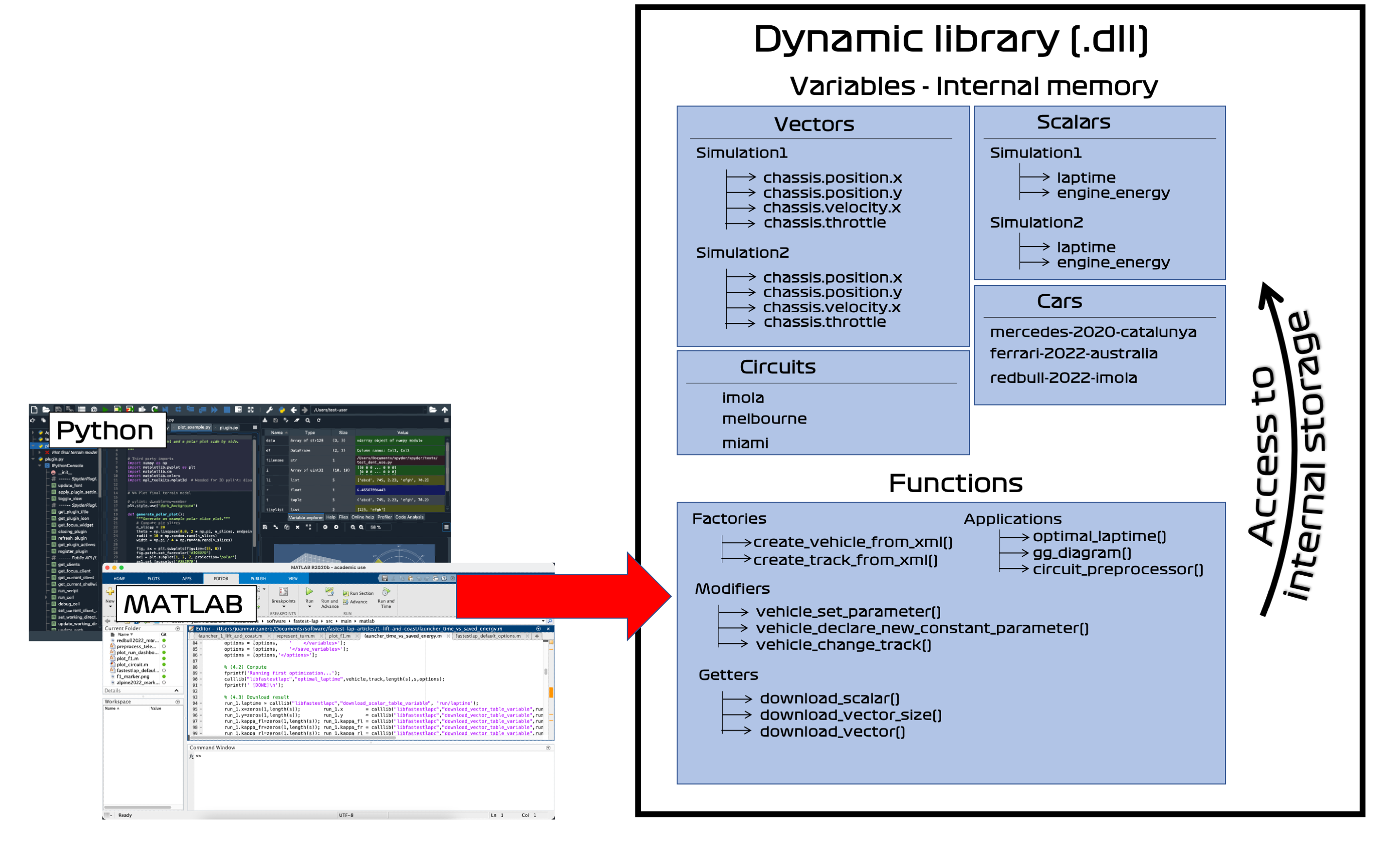Overview
The philosophy of this software is to find the perfect balance between performance and versatility. Code written in C++ is super fast and efficient, and scripting languages such as MATLAB and Python are versatile and perfect for data processing and visualization, plus are well known to everybody.
What we came up with, it’s a C++ world in the form of a dynamic library, that is
controlled through Python/MATLAB. This library (the .dll file for Windows, .dylib for Mac, and .so for Linux) is responsible for all the
heavy computations such as gg diagrams, laptime optimizations, and circuit preprocessors.
A dynamic library is a collection of functions plus internal memory to store data (scalars, vectors, cars, circuits,…). The functions are the entry port to the Fastest-lap library from Python/MATLAB. One can create/modify/delete variables in the internal memory, and run applications such as gg-diagrams, optimal laptimes, and circuit preprocessings. After an application has been run, the results will be stored in the internal memory, which can be later downloaded to Python/MATLAB.
Examples of the functions you can find are:
Factories: to create variables in the internal memory (e.g. to create a car, a circuit, a scalar variable, a vector)
Modifiers: to modify variables stored in the internal memory (e.g. to modify a setup parameter of a created car)
Applications: to run simulations: circuit preprocessor, gg diagram, and optimal laptime
Getters: to retrieve the results and data back to Python/MATLAB
Destructors: to delete variables once they are not needed anymore

The variables are internally stored by name (as in every programming language), and there can only one and only variable with the same name.
That is, if there’s a vehicle called "my_car", one cannot create another vehicle called "my_car" or a vector called "my_car".
Also, one can use paths to group variables. For example, in the figure, there are the vector variables Simulation1/chassis.position.x and Simulation2/chassis.position.x
With the use of this methodology, it is very easy to perform computations. For example, what the quickstart example does is:
Create a car by the name of
"car". This will add a variable of type"vehicle"into the internal memory with the name"car"Create a circuit by the name of
"catalunya". This will add a variable of type"track"into the internal memory with the name"catalunya"Run optimal laptime. The output of this function is a collection of timehistories from the simulation. These timehistories are new variables of type
vectorstored in the internal memory under the prefixrun/, for example,"run/chassis.position.x","run/chassis.position.y","run/chassis.velocity.x", …Download results. The vector and scalar tables can be emptied afterwards by calling
fastest_lap.clear_tables_by_prefix("run/")